We then had a quick briefing at each of the four key product demo areas
- Rental & Staging
- Corporate, Collaboration and Retail
- Broadcast
- Control Rooms
Rental & Staging
In rental, the key development recently has been in developing light and ultralight LED panels and the company has two carbon fibre-based systems with either 15kg/m2 or 9.6kg/m2. The ultralight range has slots to allow wind to pass through as well as reducing weight. The panels can be used indoor or outdoor (CLI and CLO models) and the different series can be mixed.
In the 1.9mm pitch, traditional LED displays can get very fragile (one of the reasons for the development of CoB technology – Man. Ed.). To improve the resistance to damage, Leyard puts a silicon coating over the LEDs to, effectively, encapsulate them. Although this reduces the visual performance slightly because the panels get more shiny, Olaf Mineo said that there was a reduction of 70% in the level of damage. A feature of the cabinets is that they have a 45 deg bezel on the edges, so can be made with almost seamless outside corners.
In the showroom there was a floor LED installation and these models are available in 5.2mm to 10mm pitch. The design has been changed, now, to have a black surface, which makes the technology more suitable for applications in TV studios, particularly.
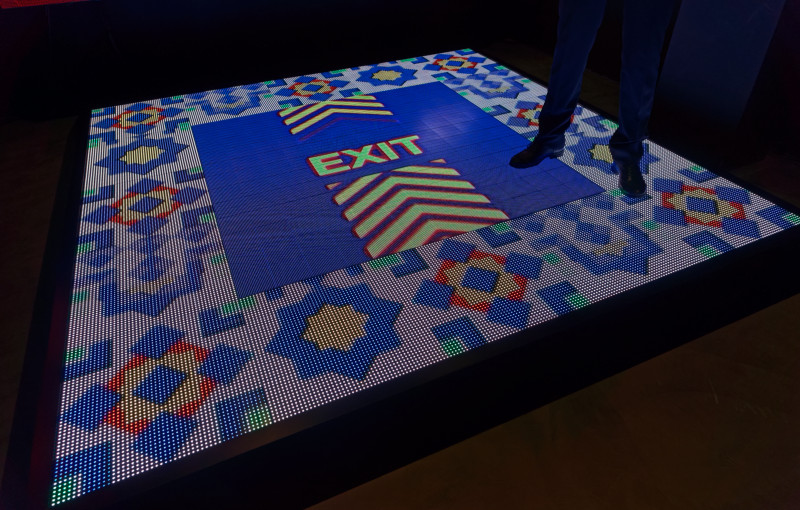 Leyard’s LED Floor is used for events and broadcast studios. Image:Meko
Leyard’s LED Floor is used for events and broadcast studios. Image:Meko
In response to a question, Mineo said that a FullHD installation takes around 9.5 m2 of 1.9mm pitch LEDs, with UltraHD possible in 30 m2. Leyard has sole 4,000 m2 of its rental displays with little or no damage, Mineo said.
The cabinets can be slightly bent and curved and we heard that some units had been installed for six months with a curve, but which were returned to flat again with no problems. The carbon-framed cabinets have applications in retail where LEDs may need to be ceiling hung and the weight of tradtional cabinets becomes an issue. Leyard has a magnetic mounting system that can make changing cabinets very simple.
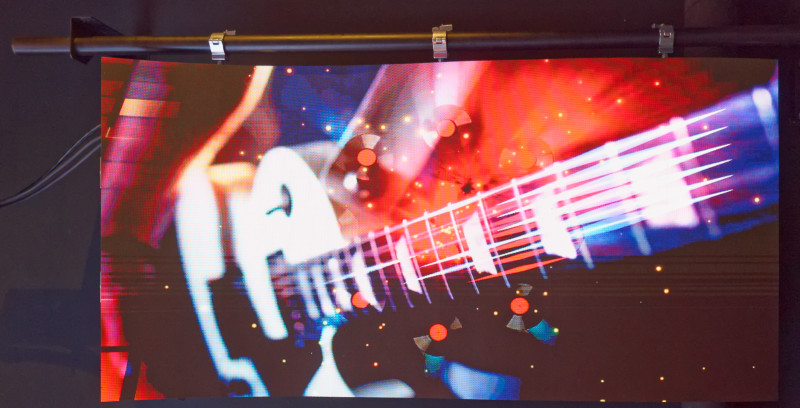 The lightweight LEDs are useful if they need to be hung and can be curved. Image:Meko
The lightweight LEDs are useful if they need to be hung and can be curved. Image:Meko
As well as the carbon products, Leyard continues to supply aluminium/magnesium cabinets where weight is not so critical.
A topic that is slowly gaining importance is the issue of EMC and Leyard has ensured that its products are compliant. The company is also developing a support structure and has two technicians in Spain, two in France and four in the UK and in Germany.
Mineo said that the company has developed special flight cases for its panels and 3 m² of LEDs weighs 80kg, including the flight case. Indoor panels are available in 1.9, 2.6, 3.9, 5.2 and 7.8mm pitch. Outdoor displays are from 3.9mm to 7.8mm. Brightness can be up to 8K cd/m² with outdoor displays at 6,000 cd/m² and down. The modules can be used in landscape or portrait mode and Leyard has a ‘long term colour guarantee’ for up to seven to eight years.
Corporate, Collaboration and Retail
Next we looked at the corporate, collaborative and retail demonstrations. Here, the first focus was on LCDs where 98″, 86″ and 75″ interactive displays are being supplied. The panels are 10cm in depth including the cover glass which is optically bonded. Touch using infrared with up to 32 points is supported. Above 98″, video walls are offered. Here, each individual panel is bonded. Part of the reason that the panels are reasonably slim is that Planar puts the power supplies off the main display for easier maintenance and allowing fanless operation. Video wall panels are available in 46″ and 55″.
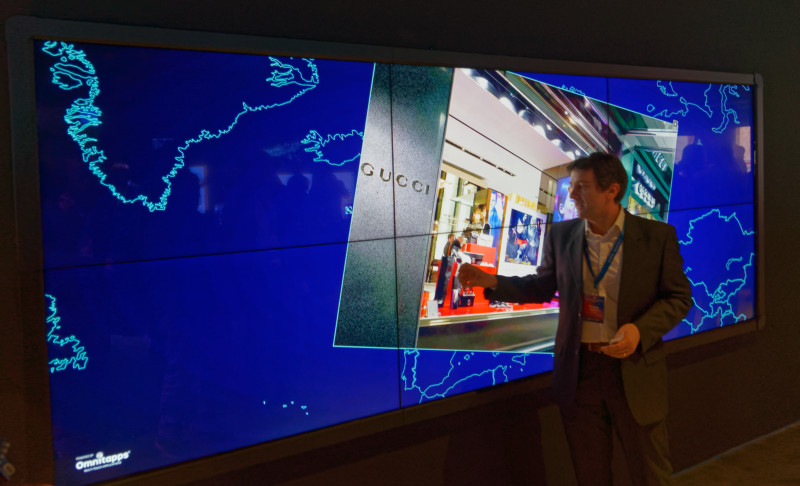 Collaboration is a big topic for Leyard. Image:Meko
Collaboration is a big topic for Leyard. Image:Meko
For larger walls, LEDs in a 16:9 format are supplied with a 54″ diagonal – for example, an array might be 3 x 2 modules, as more height doesn’t usually make sense in interactive applications. For touch applications, Leyard can supply a plastic film to protect the LEDs and help to keep them clean. Typical pitch is 0.9mm or 1.2mm for this kind of application although it is not likely to be mainstream – the cost of a display is from €100,000 to €150,000.
Planar is doing more business in retail and is looking to develop the market. It has had a successful roll-out of a project with Gucci.
Leyard Successful in Broadcast
Hans van Houdt is Business Development Director and he talked about Broadcast, an important market segment for Leyard. The very unusual lighting and cameras used in broadcast studios means very particular requirements that Leyard can meet, with the support of specialist partners in different geographies. The company’s TVH 1.6mm has been the subject of ‘many installs’, although it is also available in 1.9mm and 2.5mm. A particularly popular feature is a black shading technology that improves contrast in lighting that can often be a challenge.
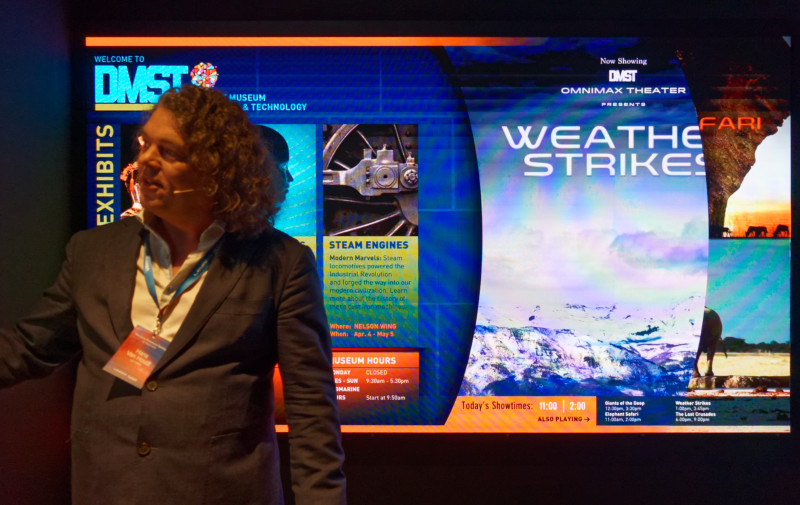 van Houdt introduced broadcast products. Image:Meko
van Houdt introduced broadcast products. Image:Meko
The panels are designed so that screens can be curved, which can be preferred in studios. There are also some installations where touch is required, so the collaborative plastic film can be applied. Some clients cannot stretch their budget to the TVH series, so Leyard also has the TVF series which is approximately 25% cheaper but still has good performance because of its black matrix.
The studios often have a very low white point for image capture to balance with lighting and Leyard told us that it can set up its LEDs for temperatures of ‘less than 3,000 deg K’. Refresh rates are also 3,000Hz which helps avoid flicker issues. In response to a question about moiré, van Houdt said that, as far as he knew, there are no more ‘anti-moiré’ products on the market as it is really impossible to ensure there is no problem at all. However, he said, good partners can help broadcasters understand ‘no go’ areas with particular cameras and lenses to minimise the chance of a problem. “Real world experience and knowlege is essential”.
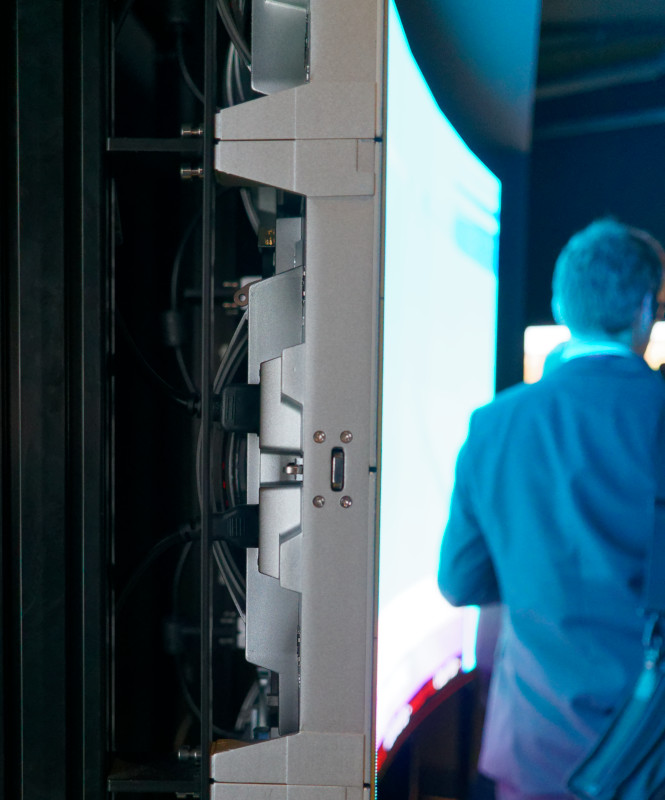 Leyard has demoes of the LEDs in curved configurations. Image:Meko
Leyard has demoes of the LEDs in curved configurations. Image:Meko
HDR has been a hot topic recently and Leyard has done work with its displays to ensure that they know that they will work well with Sony cameras, which are popular for HDR.
One of Leyard’s acquisitions recently has been ‘NaturalPoint’ motion capture, which is used in TV and cinema and there will be demonstrations of the technology in the Barcelona showroom facility. The technology can be used to ‘touch enable’ curved walls and special spaces. There are lots of applications in augmented reality that will rely on this motion tracking and the company plans to make the most of those. There is a museum in Barcelona that has installed a tracking system to enable a very immersive experience for visitors.
Control Rooms Going LED
Christian Orcin Torner then showed us the control room area which was highlighted with a 1.5mm LED wall in the TWS series and controlled by the firm’s own VCS system which is a twenty input, twenty output system to allow the display of many sources. The system is intended for control rooms (or corporates) and is not designed for rental and staging. The system can run apps and show content such as PPT files directly. It can also runs content such as Scala apps.
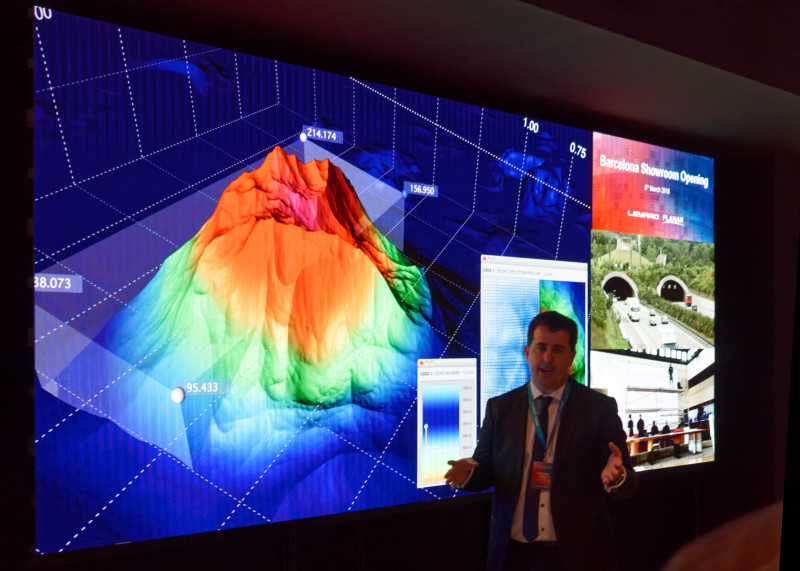 Oil and gas is a good market for Leyard. Image:Meko
Oil and gas is a good market for Leyard. Image:Meko
A popular configuration is a FullHD + a half – i.e 2880 x 1080 and typical pitch is 1.5 or 1.8 although if needed Leyard can go down to 1.2, 0.9mm or even as we saw at ISE to 0.7mm pitch. That kind of pitch is ‘LCD like’. Sometimes the pitch is limited by the total resolution that the system can support but a 3 x 3 array of cabinets can support FullHD. There is a sophisticated 12 point alignment system so that cabinets can be seamlessly arranged, even if cabinets have been replaced for maintenance. The system is designed for cabinet swapping, rather than modules to avoid the damage that can come from extensive changes over the many years that a control room system may be in operation. Cabinets can be factory re-calibrated if needed.
Orcin highlighted the off-cabinet power supply which is rack-mounted and means redundancy can be correctly managed.
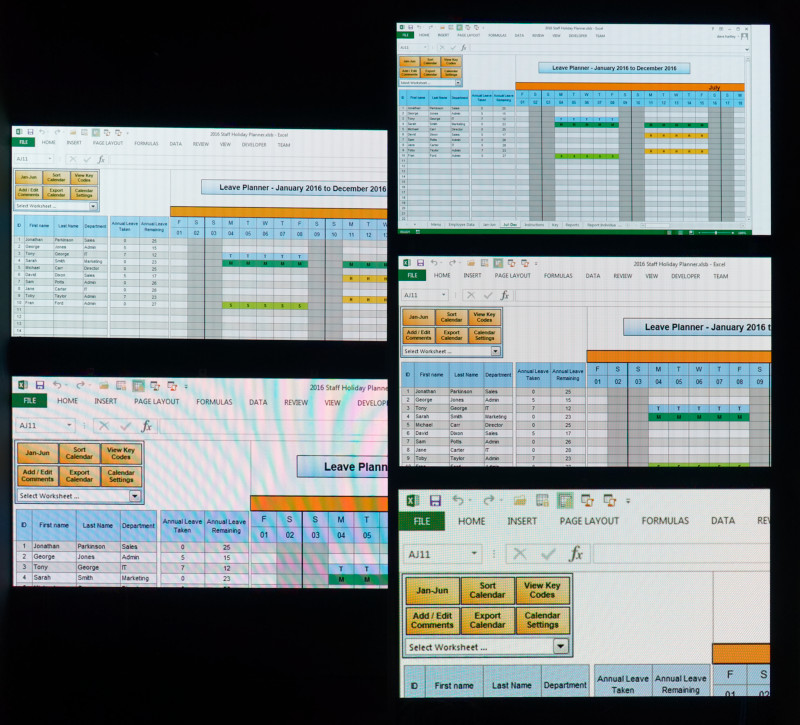 Leyard had several areas with different LED Pitches to allow prospective customers to see the effect at different viewing distances. Note that our image highlights the challenge of moiré when photographing LEDs! Image:Meko
Leyard had several areas with different LED Pitches to allow prospective customers to see the effect at different viewing distances. Note that our image highlights the challenge of moiré when photographing LEDs! Image:Meko
Peak brightness is around 800 cd/m² for the small pitch products, but installations, like those in broadcast, often operate at just 15% or 20% of the full brightness and at those levels, the quality of the controller and processing needs to be good. Leyard uses a common cathode architecture in this application, although it doesn’t highlight that feature.
Leyard installed a big control system for Eurotunnel.
Klaus Hofmeier of Leyard said that
“Content is King, Context is Kaiser, but relevancy is God’.
Finally, we looked at some 3D displays which will be at the location. Although not fashionable in TV or entertainment, there are some serious applications where 3D is valued highly. Chemical, gas and oil is one market where this applies and healthcare. The company is working with suppliers of systems for 3D tomography and the company is also working in areas where 3D cameras are used in surgery and in these applications, very low latency becomes critical and the demands for quality and resolution are very high. The cameras have become tiny, but have very high performance. Partners include Siemens, Dassault and ESI. Leyard is working with VRWall.com.

